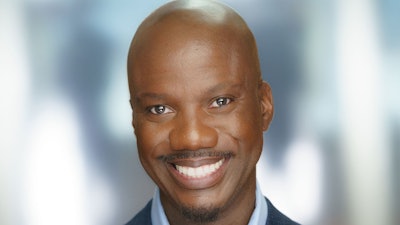It was love at first sight. I remember seeing copies of Black Issues in Higher Education in various administrators’ offices at Albany State, the historically Black university where I was an undergraduate student journalist in the mid-1990s. I didn’t have enough money at that time to become a subscriber, so I would either sit and read the magazine wherever I found it, or I would take it, read it from cover-to-cover, and then return it to its rightful owner. I was 19 when I first touched the pages of Black Issues; later this year, I will be 49. Ours is a beautiful, almost 30-year love affair.
 Dr. Shaun Harper
Dr. Shaun Harper
One feature of the magazine that was praiseworthy then and continues to be a tradition now is the way it blends higher education news with celebrations of extraordinary professional contributions. The latter plays itself out most powerfully on the front cover. Nearly 30 years later, I have come to realize that seeing Black faces on most covers is what compelled me to pick up the magazine as I awaited meetings with ASU’s president and other administrators. I love Black people – incontestably, this 40-year-old publication does and always has, too. This is why having been on the front cover of the magazine now known as Diverse: Issues in Higher Education three times means so much to me. Seeing Black people’s work showcased in this way at such a young age inspired me to do excellent, high-impact work. I am grateful to Jamal Watson and Ronald Roach (a former staff writer) for choosing to honor me with a trio of wonderful front covers.
Perhaps as impactful as the front covers were announcements I read in the “On The Move” section over the years. As an undergraduate student leader, seeing Black people transition into what sounded like amazing new jobs showed what was possible for myself and others like me. I didn’t know those people, but I saw they were mostly professionals of color. I was fortunate to have numerous possibility models at my HBCU; the magazine consistently gifted me hundreds more. Now that I think about it, this section of Black Issues was analogous to kids sitting on the front porch of their homes watching cars drive by and fantasizing about which would someday be theirs. Watson wrote an incredibly generous and exciting story about my move from the University of Pennsylvania to the University of Southern California seven years ago. I suspect it had the same inspirational effect on today’s generation of young Black scholars as those career announcements and features had on me almost three decades ago.
Ontario Wooden and I went to Albany State together; we both pledged Kappa Alpha Psi there in spring 1998. We then went on to Indiana University, the birthplace of our fraternity, to earn our master’s and doctoral degrees. The IU Higher Education and Student Affairs Program allowed Ph.D. students to propose and teach special topics courses for undergraduates. Wooden and I co-taught a class that we titled, “Black Issues in Higher Education.” Alongside books and articles from peer-reviewed academic journals, numerous pieces from the course’s namesake were required reading. The course was open to any IU undergraduate, yet every student who elected to take it was Black. Many of them now work in higher education. Were it not for Black Issues, Wooden and I wouldn’t have even thought to create such an inspirational space for Black IU students.





















